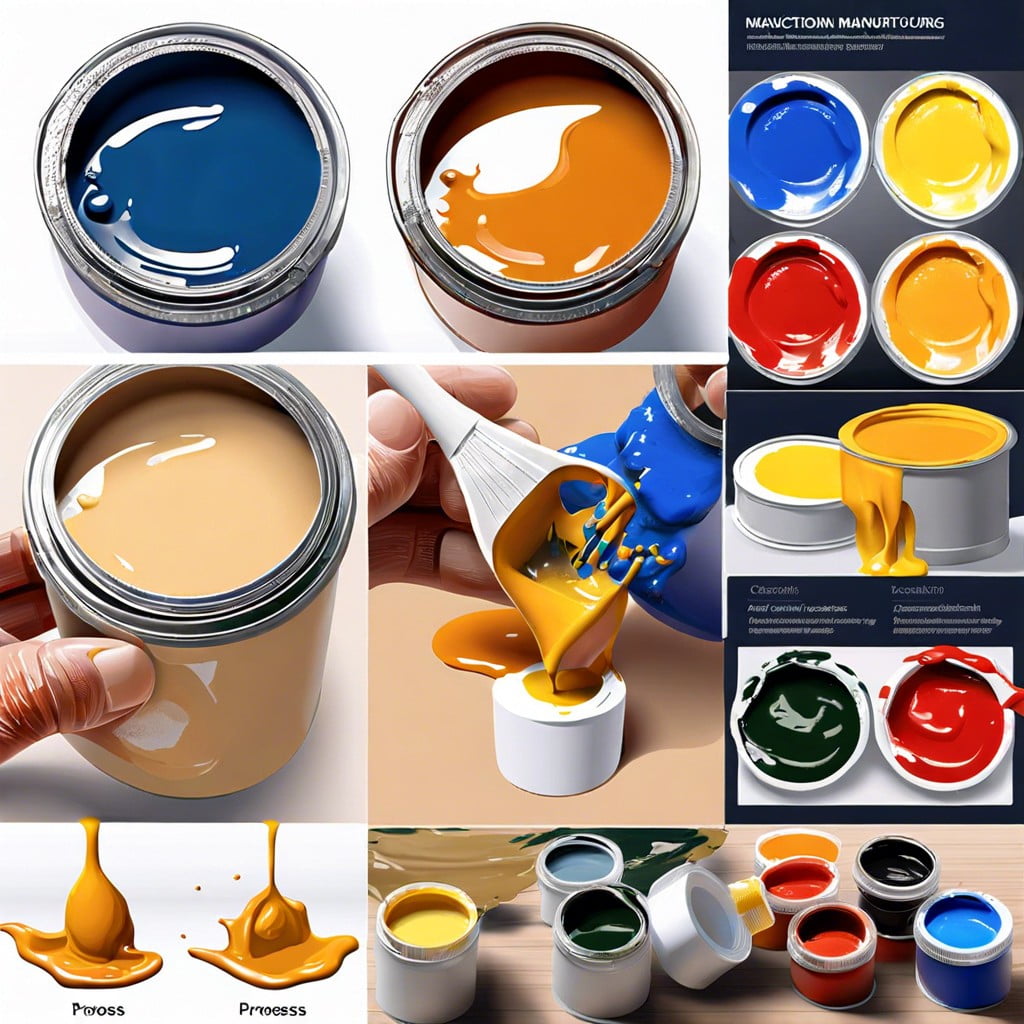Discover how acrylic polymer paint revolutionizes the way we add color and protection to surfaces, from art canvases to house walls.
Key takeaways:
- Acrylic polymer paint is versatile, quick-drying, and offers vibrant colors.
- It consists of pigments suspended in a polymer emulsion, creating a strong, durable film when dried.
- Acrylic paint has fast drying times, durability, versatility, and emits lower levels of VOCs.
- Acrylic paint dries quickly, is water-resistant, and maintains vivid hues.
- Future trends include smart acrylic paints, bio-based acrylics, and nanotechnology advancements.
History of Acrylic Polymer Paint

Acrylic paints burst onto the scene in the 1940s, initially as a house paint. Artists quickly adopted this medium due to its versatility, quick drying time, and vibrant colors. By the 1950s, commercial acrylic paints were available, supplying artists with a new range of possibilities. These paints were embraced for their ability to mimic oil and watercolor paints while offering unique properties, such as less cracking and fading over time.
The development of acrylic polymer paint marked a significant shift in artistic techniques, making it a favorite for novices and masters alike. Pop art legends like Andy Warhol were known to use acrylics, appreciating their ability to rapidly produce bold, sharp images that captured the vibrant consumer culture of their time.
Today, acrylic polymer paint has evolved with numerous formulations to enhance its durability, gloss, and ease of application, reflecting its roots in both practicality and creativity.
Composition and Chemical Properties of Acrylic Polymer Paint
Acrylic polymer paint is like a chemical party; it primarily consists of pigments suspended in a polymer emulsion. These pigments provide color, ranging from your daring reds to soothing blues. The polymer, typically an acrylic polymer, acts like an assertive event organizer, ensuring that the pigments stay in place and behave as they dry.
This paint also contains various additives. These are the secret sauce that influences everything from how fast the paint dries to its resistance to the rogue sun rays trying to fade its vibrant colors. Sometimes preservatives join the mix, keeping fungi and bacteria from crashing the party.
Most fascinatingly, when the water in the acrylic paint evaporates, what’s left behind is a strong, durable film. This film forms due to the polymer particles cozying up and intertwining like best friends holding hands, creating a protective layer over whatever it’s painted on. This bonding isn’t just for looks; it protects surfaces from moisture, UV rays, and even graffiti artists with bad intentions.
Benefits of Using Acrylic Polymer Paint in Construction
Acrylic polymer paint, often simply called acrylic paint, has several perks that make it a favorite for builders and DIY enthusiasts alike. Firstly, it’s like the Usain Bolt of drying times—remarkably fast! This allows multiple coats to be applied without long waiting periods, speeding up construction schedules.
The paint’s durability is also a major advantage. It can resist the elements like a charm, making it perfect for both interior and exterior surfaces. Whether it’s blazing sunlight or a torrential downpour, acrylic paint holds its color and finish, preventing frequent touch-ups.
Another benefit is its versatility. It adheres well to a wide variety of surfaces including concrete, wood, and metal. This “stick-to-itiveness” means it’s highly useful in different areas of a construction project.
Lastly, for the environmentally conscious, acrylic paint emits lower levels of VOCs (Volatile Organic Compounds) compared to oil-based paints. This means fewer odors and a smaller environmental footprint.
With these benefits, it’s clear why acrylic polymer paint is a top pick for construction projects—combining speed, durability, and eco-friendliness into one vibrant package.
Comparison: Acrylic Vs. Oil and Watercolor Paint
Acrylic paint steals the show when it comes to drying times. Unlike oil paint’s leisurely dry-down that can take days, acrylics are ready for another coat in mere minutes. This feature is especially handy for construction projects on a tight schedule.
Water resistance is another win for acrylics once they dry. No need to worry about a little splash ruining your masterpiece. On the flip side, oil paints demand a meticulous sealing process to block moisture, and watercolor’s vulnerability to water means extra care is always on the menu.
Talking about color brilliance and longevity, acrylics maintain their vivid hues without yellowing over time, a common complaint with oil paints. Meanwhile, watercolors offer translucent beauty but can fade faster, requiring top-tier preservation tactics.
Yet, when it’s texture you’re after, oil paints give you that rich, buttery consistency that’s perfect for creating detailed strokes and adds a touch of luxury to any surface. Acrylics can mimic this too, but it often requires additives. Watercolors? They bring a lighter, ethereal feel that’s hard to replicate with heavier paints.
Future Trends in Acrylic Polymer Paint Technology
As technology marches on, so does the development of acrylic polymer paints, promising more exciting advances ahead. Innovations focus on enhancing both performance and environmental friendliness.
Firstly, smart acrylic paints are on the horizon. These aren’t just any old paints; think paints that change color based on temperature or light exposure, making buildings more dynamic than ever. Energy efficiency meets aesthetics—now that’s a cool concept, literally and figuratively!
Secondly, with sustainability as a hot topic, the push for bio-based acrylics is gaining momentum. These next-gen acrylics aim to reduce reliance on petroleum-based components, using materials derived from plants instead. So, future acrylic paints will not only be easier on the eye but also softer on the planet.
Lastly, the integration of nanotechnology could make acrylic paints tougher and longer lasting. Imagine a coat of paint that can self-heal scratches or resist dirt accumulation. Tiny tech, big benefits!
Each development not only impacts how construction projects look but also extends the functional capabilities of buildings, contributing to smarter, more sustainable construction practices. What a bright future for acrylic polymer paint technology!
Recap




